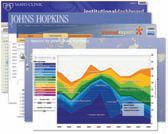Social networking has huge potential for science

Earlier this year Collexis launched its first social networking site, BiomedExperts.com. The company's chief operating officer, Steve Leicht,tells us how such sites can help research
How is social networking used in research?
There has not been much research on this. So far, professional uses of social networking have focused mainly on recruitment or just general networking. However, its potential in the research community is much more enlightening. It enables people to work with and talk to others in their fields and to go beyond geographical and institutional boundaries. This offers a unique opportunity.
How did Collexis get into this area?
Collexis was formed in the 1990s out of a university research project. A professor at Leiden University in the Netherlands who was an expert in malaria noticed how often he was being faxed requests for information and had to fax that information back all over the world. The project looked at whether the web could instead be used to connect experts in medical research. The result was one of the first coordinated attempts at creating an international network of experts and information to improve global health and the technology was commercialised in 1999.
Our early products were around full-text identification of documents and experts. As social networking started to explode it seemed logical to use these types of tools to connect experts too.
Even general social networking sites such MySpace and Facebook are well used by research communities. We launched BiomedExperts.com in February 2008 and began marketing it in the April. We weren’t the first to create a social networking site for scientific researchers but we were the first to pre-populate it with experts.
What are the benefits of prepopulating it?
From the start, in addition to having an extensive database of experts, we could also include social networks based on the people that a particular expert has co-authored papers with – and who those people have co-authored papers with too. This means that right from the start there was useful information to help people, for example, to search for potential collaborators.
Another thing that is sometimes missed in discussions is that there is a portion of any community that is not going to do social networking. And the most senior people are often the last people to fill in their profiles. I think there is some additional intrinsic value in pre-populating the site so that all these people are represented too. It gives completeness.
Where did your data come from?
When the site was launched we had 1.5 million profiles in biomedicine. This was all from information on PubMed. That material is unique to life sciences and medicine and is in the public domain. We use metadata from PubMed to index the data. We also create profiles of each abstract using our own text mining tools.
This all means that we have a pretty good estimation of the experts before they sign up. From this starting point, users register and can add all that you’d normally see in social networking. We currently have more than 48,000 registered users and more than 10,000 new registered users are added each month. We also have a large number of people who visit the site to see the experts – around 30,000 visits each day.
The site enables text mining and author disambiguation. We also have a number of intelligent filters so users can see, for example, information about other experts in their fields displayed geographically.
What is your business approach?
We put this site out for free. We honestly believe in the power of connecting researchers in their community. However, this does also feed our commercial tools that we build for clients. We are now setting up social networks for publishers or societies that want to provide benefits for their members or author community.
In February 2008 we bought Lawriter, a provider of legal information for bar students and attorneys. Since then we have launched CasemakerX.com, a social networking site for law students. We will also do more in biomedicine and there will be sites in other areas of STM.
I believe that the promise of networking will come true. People are awash with information of varying degrees. The real value is in sifting through this. We believe that the long-term need is in delivering usable information at the time it is needed as well as providing points of collaboration. It’s a way to share and communicate information around the world, to flatten the research world.
Interview by Siân Harris






